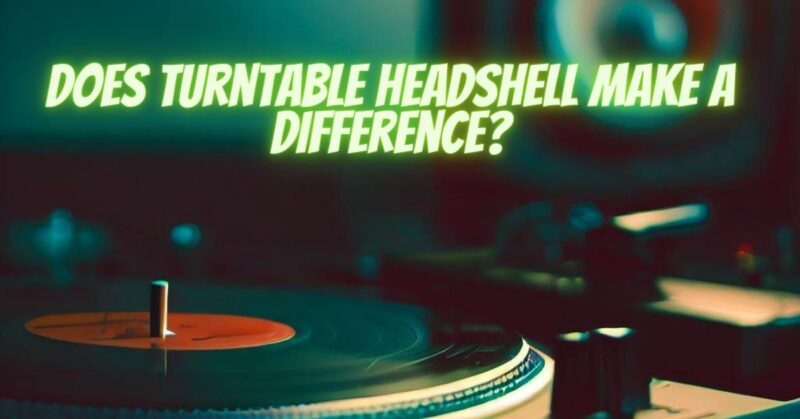The intricate world of turntables is a harmonious blend of components that work together to produce exquisite audio experiences. Among these components, the turntable headshell, often underestimated, plays a crucial role in shaping the audio performance. In this article, we’ll explore the significance of the turntable headshell and how it can influence the overall audio quality.
Understanding the Turntable Headshell:
1. What is a Headshell?
- The turntable headshell is a component that connects the phono cartridge to the tonearm. It serves as a platform for the cartridge and stylus, facilitating their alignment and secure attachment.
2. Importance of Alignment:
- Proper alignment of the cartridge and stylus is vital for accurate tracking and optimal audio reproduction. The headshell plays a key role in achieving this alignment.
How the Turntable Headshell Influences Audio Performance:
1. Cartridge Compatibility:
- The headshell’s design and geometry influence the types of cartridges that can be mounted on the turntable. Different cartridges have varying compliance and tracking characteristics, and the headshell should accommodate the chosen cartridge’s requirements.
2. Tracking Accuracy:
- The headshell’s alignment with the tonearm affects how the stylus tracks the grooves of the vinyl. A misaligned headshell can result in uneven stylus wear, distortion, and compromised audio quality.
3. Resonance Control:
- The material and construction of the headshell can impact its resonance properties. A well-designed headshell can help dampen vibrations and resonances that can affect audio clarity.
4. Weight and Balance:
- The weight of the headshell can influence the tracking force exerted by the stylus. Proper weight and balance are essential to ensure that the stylus tracks the grooves accurately without excessive pressure.
5. Signal Transfer:
- The headshell’s electrical properties can influence the signal transfer between the cartridge and the tonearm wiring. High-quality headshell connectors ensure optimal signal transmission, preserving audio fidelity.
Choosing and Optimizing the Headshell:
1. Material Selection:
- Headshells are commonly made of materials like aluminum, magnesium, and carbon fiber. Each material has its sonic characteristics, and your choice can affect the overall tonal balance.
2. Alignment Tools:
- Using alignment tools like protractors can help ensure precise cartridge alignment on the headshell, enhancing audio quality and reducing wear.
3. Tracking Force Adjustment:
- Some headshells allow for weight adjustment, influencing the tracking force. Careful adjustment ensures the stylus tracks the grooves optimally without excessive pressure.
4. Cartridge Compatibility:
- When selecting a headshell, consider the cartridge’s specifications and compliance. Ensure that the headshell can accommodate the chosen cartridge’s requirements.
The turntable headshell, often overshadowed by other components, significantly influences the audio performance of your turntable setup. Its role in cartridge alignment, tracking accuracy, resonance control, and signal transfer cannot be underestimated. Whether you’re a casual listener or an audiophile, paying attention to the quality and design of the headshell can elevate your vinyl listening experience. By understanding the influence of the headshell and making informed choices, you’re enhancing the delicate interplay between stylus and groove, allowing the music to unfold with the utmost clarity and fidelity.


